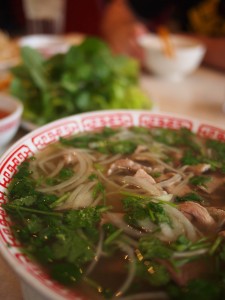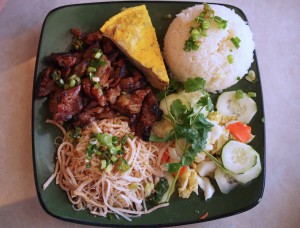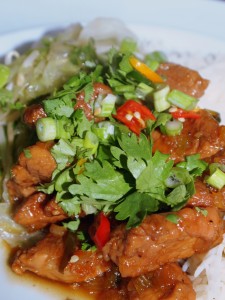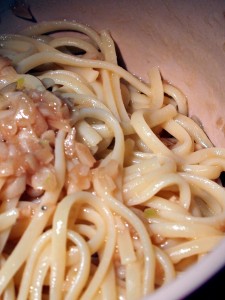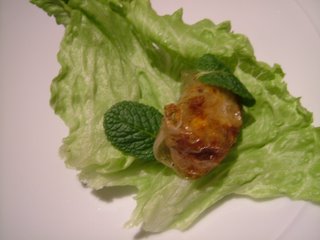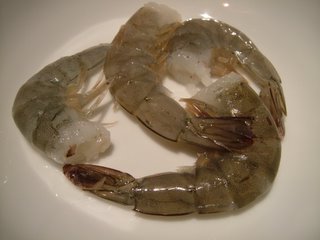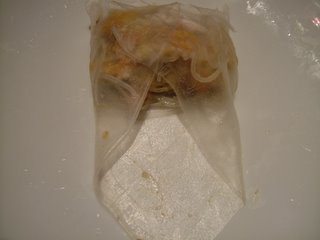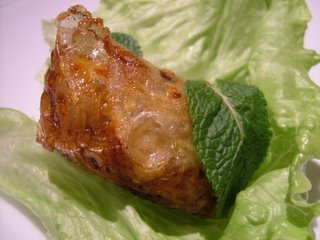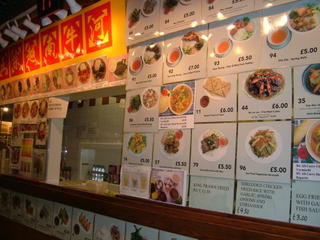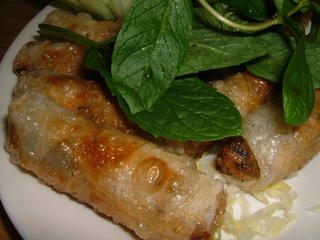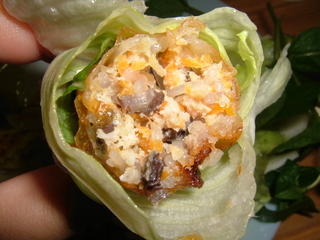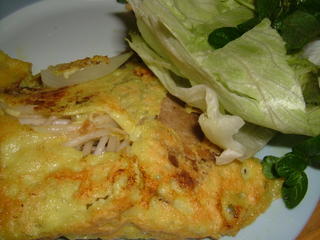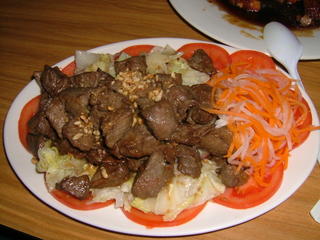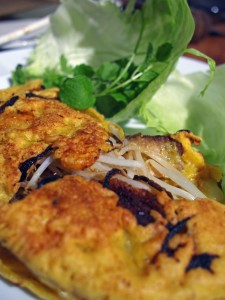 Pancake day is coming up on March 8. I’m all for a lovely dessert crepe, but this year, I feel like ringing the changes a bit and making pancakes a savoury course.
Pancake day is coming up on March 8. I’m all for a lovely dessert crepe, but this year, I feel like ringing the changes a bit and making pancakes a savoury course.
I’ve been obsessing a bit about Vietnamese food ever since tasting the best pho I’ve ever had in California last month. Conversations have been had on Twitter (which revealed that your best bet for a Vietnamese meal in London is probably Viet Grill in Shoreditch – I’ve not had a chance to go yet, but I’m assured by a huge number of London diners that it’s as good as you’ll find in the UK), and while mulling over just how well the Vietnamese work soup, sandwiches and other staples, it struck me that they also make a pretty damn fine savoury crepe, just right for Shrove Tuesday.
Banh xeo are a spectacularly tasty plateful, with a scattering of sweet prawns, tender onions and savoury pork – this is another use for any leftover roast belly pork you might not have got through in Monday’s stir fry – and a shatteringly crisp batter flavoured with coconut and turmeric. Rice flour is what glues the whole thing together and gives it its light crispness; despite the visual similarity to an omelette, there are no eggs in this particular pancake, which makes it a good choice if you’ve got someone who can’t eat them visiting at this time of year.
Chunks of banh xeo are traditionally eaten wrapped up in a lettuce leaf with some herbs, then dipped in a bowl of nuoc cham – a spicy, piquant, salty sauce made from fish sauce, limes, garlic and chillies. I’ve included a recipe for the sauce below. This is one of the few occasions on which an iceberg lettuce is a variety I’ll actually recommend – its texture is great here. Take the stem out with the tip of a knife and chop the lettuce in half . You can now separate the large leaves of the lettuce into cups just the right size and shape for wrapping things up in. I’ve suggested you use mint and coriander because they’re easily available in the UK, but if you can get your hands on any other Vietnamese culinary herbs, they’re wonderful here. Try Vietnamese Herbs for pictures and more information on herbs for growing and eating.
I used a 20cm non-stick frying pan to make these, and served two to each person. You’ll be working a bit of a production line, so you’re best off eating in the kitchen – serve each pancake as it comes ready, and be prepared to jump up and down a bit from the table to get the next one ready as you eat. To make eight pancakes, you’ll need:
Banh xeo
375g rice flour
1 heaped teaspoon turmeric powder
400ml coconut milk (1 can)
400ml cold water
1 teaspoon salt
350g roast pork belly
350g raw peeled prawns
300g beansprouts
2 medium onions
Flavourless oil or (preferably) lard, especially if you can save some from roasting the pork, to fry.
To serve
1 iceberg lettuce
1 large handful fresh coriander
1 large handful fresh mint
Nuoc cham
75ml water
2 heaped tablespoons soft brown sugar or palm sugar
75ml fish sauce
Juice of 4 limes
1 tablespoon rice vinegar
2 fresh birds eye chillies
4 cloves garlic
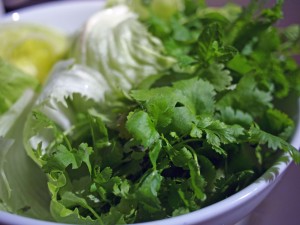
The pancake batter needs half an hour to rest, which gives you plenty of time to get all the pancake ingredients ready to go. Everything should be chopped and positioned to cook immediately; things move quite fast once your ingredients are in the pan.
Sieve the rice flour and turmeric into a large mixing bowl with the salt. Combine the coconut milk and water in a jug and beat it into the rice flour mixture bit by bit with a hand whisk until you have a smooth batter about the texture of double cream. Set aside at room temperature to rest.
While the batter is resting, slice the pork belly into about 32 thin slices, and halve and slice the onions. To make the nuoc cham dipping sauce, pour the water, straight from the kettle, over the sugar and stir until all the sugar is dissolved. Leave to one side to cook a bit while you chop the chillies and garlic, then pound them in a mortar and pestle. Add the chillies and garlic to the sugar and water with all the other liquid ingredients and put to one side until you are ready to eat. Put the lettuce leaves and herbs in a serving dish in the middle of the table.
When the batter has rested for half an hour (you can leave it for up to four hours if you want), get your frying pan as hot as you can on top of the stove, and melt a tablespoon of lard in it. Throw in four slices of pork, four prawns and a small handful of onion pieces (about a quarter of an onion), and stir-fry for a minute or two until the prawns are pink and the onion is starting to soften off. Use a ladle to pour a thin layer of the batter over the ingredients in the bottom of the pan, and scatter a small handful of beansprouts over the surface of the pancake.
Allow the pancake to sizzle away for 5-7 minutes, until the bottom is golden-brown and very crisp, and the softer top cooked through. Fold in half around the beansprouts and slide onto a plate to serve immediately, to be wrapped in pieces in the lettuce with some herbs, and dipped in the nuoc cham.

